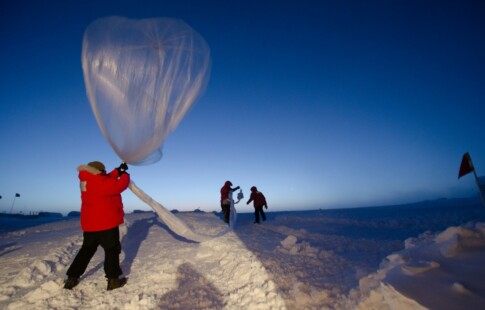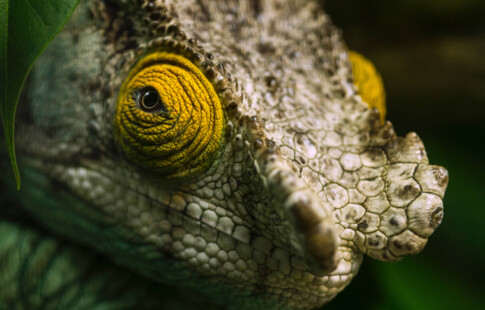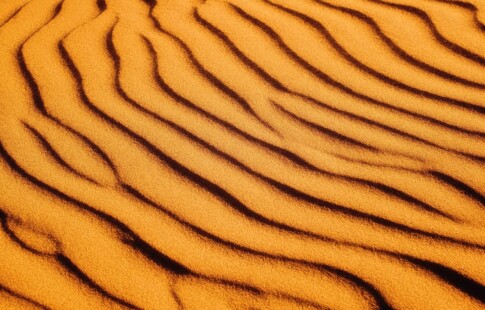
The Nebulous Definition of Megafauna
We are reader-supported. When you buy through links on our site, we may earn affiliate commission.
How big is huge? When discussing conservation efforts, the conversation inevitably turns to megafauna, loosely defined as large animals. But in a field dominated by precise measurements, somehow this term manages to escape scrutiny under the collective microscope. Everyone agrees that elephants fit the bill — but what about deer, snakes or Japanese spider crabs? Were the extinct giant dragonflies megafauna? It depends on who you ask.
Undisputed Animals
Though some species fall into a gray area, others are definitely classed as megafauna, no matter where they live or if they’re being compared to another species. All weigh at least a tonne (2,205 pounds). With the exception of the hippo, which is considered semi-aquatic, all of them are terrestrial mammals and none are carnivorous. They include:
- Elephants: All three species, including the African Savanna, African Forest and Asian elephants, are considered megafauna.
- Bovines: Bison, gaurs and wild yaks may all exceed one tonne.
- Hippos, rhinos and giraffes are always considered to be megafauna as well.
When scientists discuss extinct megafauna, they’re usually talking about animals that fit in this category, such as mammoths or woolly rhinos. Under this definition of megafauna which only includes terrestrial mammals, there aren’t any carnivores, dead or alive, that count. Dinosaurs are usually not part of the discussion.
Aquatic Megafauna
The definition of megafauna is sometimes extended to include aquatic animals that weigh at least a tonne, including:
- Whales
- Elephant seals
- Great white sharks
- Ocean sunfish, also called mola molas
- Pacific walruses
Many of these animals are carnivores.
Animals That Occasionally Count
Here’s where it gets murky. Some biologists count animals weighing at least 100 pounds as megafauna, which is a 22 times smaller threshold than the other definition. Under this classification, animals like lions, deer, hyenas, gorillas and pandas are considered megafauna.
There are also reptiles that weigh over 100 pounds, including crocodiles, anacondas and Galapagos tortoises. Some fish and birds fit in this category as well, like ostriches and tunas. Anything as large as a human counts.
Sometimes the biggest animals in an area barely hit the 100-pound mark, like red kangaroos in Australia. If the definition of megafauna only counted animals over 2,205 pounds, then several countries wouldn’t have any megafauna at all. Even under this classification, some countries — like New Zealand — have no native extant megafauna, with the only large animals being exotic species.
Rarely-Included Animals
Invertebrates don’t usually make it onto the coveted megafauna list. However, there are some animals without a backbone that weigh over 100 pounds, including:
- Lion’s mane jellyfish
- Giant squid
- Giant Pacific octopuses
- Various giant clam species
With some of these animals being larger than terrestrial vertebrates, it becomes clear that there’s no real cutoff for which species count as megafauna.
Animals That Are Large by Comparison
One systematic review found that out of 276 articles on megafauna, only 26% included a definition for the term, and almost half of these papers provided no evidence to support it. The paper notes that when discussing invertebrates, length — rather than weight — is often used to characterize megafauna.
Therefore, it’s anyone’s guess as to whether the following animals can be considered megafauna. None crack the 100-pound threshold, but all of them are huge compared to similar species:
- Coconut crabs
- Japanese spider crabs
- Giant isopods
- Goliath birdeaters
- Large bamboo rats
- Flying foxes
- Atlas moths
All of these animals are clearly visible with the naked eye.
Animals That Don’t Count
Invertebrates smaller than a human hand are never classified as megafauna, no matter which way you look at it. No scientist will ever call a termite, nematode or housefly a large animal. Anything invisible to the human eye is also excluded by default.
Putting Nature Into Boxes
People love labels. A trip to any museum, grocery store or library reveals our obsession with categorization right away, and the natural world is no exception. Taxonomy seeks to label every animal and define their relationships to others. Scientists deem each animal a carnivore, herbivore or omnivore.
True, there are species that fit neatly into boxes — the purely carnivorous pythons, clearly aquatic fish, obvious parasites and undeniable endotherms.
Ironically, however, these animals are the outliers. Everything else falls in the middle of the millions of spectra we’ve tried to fit them in.
Horses, classed as herbivores, eat baby birds that fall from the nest. Mammals evolved from strange reptiles that straddled the line between two worlds, two different metabolisms. Clam shrimp have three sexes.
Most animals are hard to classify in one way or another, and megafauna are no exception. You can definitively measure an animal’s height, weight and number of teeth, but many of the resulting categories have been chosen arbitrarily. It’s no coincidence that 2,205 and 100 pounds — the weight measurements used to classify megafauna — both end with a nice, rounded number that fits within a numerical system based on the number 10.
It’s handy, yes, but also subjective. If the scientists who created the weight classes had used the metric system and rounded up to a clean, even 50 kilograms rather than the awkward 45.36 as it currently stands, emperor penguins would be kicked out of the megafauna club.
Does It Matter?
When it comes to saving species, people are more likely to want to protect the so-called charismatic megafauna, those large animals that invoke immediate sympathy. Pandas, whales, lions and giraffes are the darlings of conservation biology, because with their big eyes, social behaviors and all-around pleasant appearance, they bring in the funds.
People have always been more interested in big animals. The megafauna label may be handed out arbitrarily, but it could potentially change the way people think about conservation. Which wildlife preserve would you be more likely to back: One that conserves native megafauna, or one that only has small animals?
There’s a reason Yellowstone and Serengeti National Park are so popular. Aside from the stunning landscapes, both boast diverse groups of megafauna which draw tourists from all over the world, and they advertise that fact. For conservation groups trying to protect an animal or even ecosystem, having the megafauna distinction could mean the difference between securing public support or being ignored.
Megafauna Definition
When in doubt, picture mammals weighing over one tonne that eat plants. You can’t go wrong with that classic definition of megafauna. But if you have an open mind — or are trying to secure funding for a conservation project — the sky’s the limit when it comes to what counts as large. Maybe someday scientists will come to an agreement. Or, maybe, as with many other topics in biology, people will simply continue making their own rules.
Share on
Like what you read? Join other Environment.co readers!
Get the latest updates on our planet by subscribing to the Environment.co newsletter!
About the author
Rachel Lark
Rachel serves as the Assistant Editor of Environment.co. A true foodie and activist at heart, she loves covering topics ranging from veganism to off grid living.





